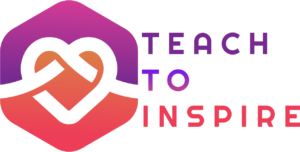In the ever-evolving landscape of education, curriculum development stands as a cornerstone of creating effective and meaningful learning experiences. The process involves a thoughtful and strategic approach to crafting learning opportunities that engage, challenge, and empower students. This comprehensive guide aims to demystify curriculum development, offering insights into its various components and strategies for designing curriculum that makes a lasting impact.
1. Understanding Curriculum Development
At its core, curriculum development refers to the process of designing a structured plan for teaching and learning. A well-constructed curriculum outlines the learning goals, content, methods, and assessments that collectively shape the educational journey. This process doesn’t just ensure syllabus creation; it establishes the foundation for a cohesive and engaging learning experience that caters to the diverse needs of learners.
2. Needs Assessment: Laying the Foundation
Before embarking on curriculum development, a thorough needs assessment is paramount. This step involves understanding the unique requirements and goals of both learners and educators. Surveys, interviews, and data analysis are valuable tools in gauging student abilities, preferences, and gaps in knowledge. This data-driven approach informs the subsequent curriculum design, ensuring that learning experiences are tailored to address specific needs.
3. Setting Clear Learning Objectives
Learning objectives serve as guiding stars for curriculum development. They succinctly state what students should be able to achieve by the end of the learning journey. Utilizing the SMART framework (Specific, Measurable, Achievable, Relevant, Time-bound), educators can craft objectives that are both clear and actionable. These objectives not only steer the curriculum design process but also offer students a sense of direction and purpose.
4. Designing the Curriculum
The design phase blends art and science, considering not only what to teach but also how to teach it. Various curriculum models—linear, spiral, thematic—can be chosen based on the subject matter and learning goals. Sequencing learning activities strategically ensures a logical progression of concepts, fostering deep understanding. Integrating real-world relevance and interdisciplinary approaches adds layers of engagement to the learning journey.
5. Selecting Appropriate Teaching Methods
Effective teaching methods breathe life into a curriculum. Lectures, discussions, group work, projects, and technology integration offer diverse ways of engaging with content. When choosing methods, it’s crucial to align them with learning objectives and cater to different learning styles. Active learning, where students actively participate in their education, promotes critical thinking, collaboration, and problem-solving.
6. Developing Assessment Strategies
Assessment is the compass that guides both learners and educators. Formative assessments provide ongoing feedback, aiding in understanding student progress, while summative assessments evaluate overall learning outcomes. Authentic assessment methods, like real-world projects, mirror the skills needed beyond the classroom. Crafting well-defined rubrics, quizzes, and projects ensures fair evaluation and constructive feedback.
7. Adapting and Iterating the Curriculum
A successful curriculum is a dynamic entity that evolves with the changing needs of students and the educational landscape. Regular evaluation and adaptation are essential. Gathering feedback from students, teachers, and stakeholders sheds light on strengths and areas for improvement. A willingness to listen and make adjustments based on feedback fosters a curriculum that remains relevant and impactful.
8. Implementing the Curriculum
Even the most meticulously designed curriculum can falter if not implemented effectively. Rolling out the curriculum involves communication, training, and support for educators. Professional development equips teachers with the necessary skills and confidence to execute the curriculum with fidelity. Overcoming resistance to change requires transparent communication about the benefits and alignment with educational goals.
9. The Future of Curriculum Development
As education continues to embrace innovation, the future of curriculum development looks promising. Personalized learning tailors content and pace to individual students, maximizing engagement and comprehension. Online education provides flexibility and access to diverse learning resources. Competency-based education shifts the focus from content coverage to skill mastery. Staying informed about these trends equips educators to design forward-looking curricula.
Conclusion
Curriculum development is both an art and a science, a balance between strategic planning and creative engagement. By understanding the importance of needs assessment, learning objectives, effective teaching methods, and continuous adaptation, educators can craft curricula that empower students to thrive in a rapidly changing world. As we journey into the future, the impact of a well-designed curriculum on learning experiences will continue to shape the landscape of education.

